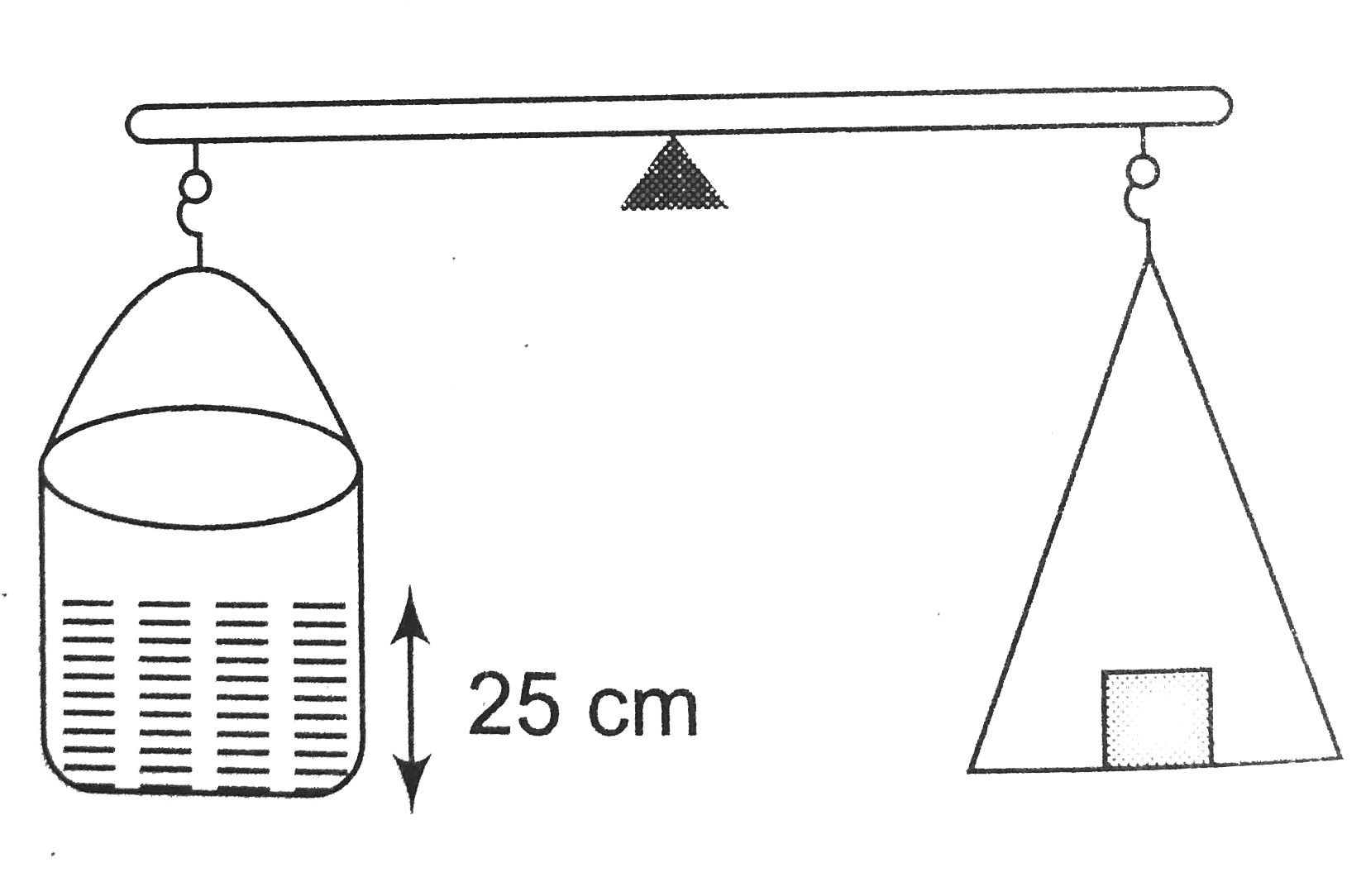A cylinder containing water up to a height of 25cm has a hole of cross-section 14cm2 in its bottom. It is counterpoised in a balance. What is the initial change in the balancing weight when water begin to flow out?

Here, a=0.25cm2=0.25×10−4m−2,
. h=25cm=0.25m
Initial velocity of water flowing out of hole
υ=√2gh
When wate emerges out from the hole. The weight of water decrease. The decrease in weight is equal to the rate of change of linear momentum. Initially velocity of liquid flowing out υ be taken constant for a small interval of time Δt. then
F=ΔpΔt=Δ(mυ)Δt=υΔmΔt
=υΔ(Vρ)Δt=υρΔVΔt
Where, ΔVΔt = volume flowing out per second
=aυ
F=υρ.(aυ)=aυ2ρ
=a(2gh)ρ=2aghρ
=2×(0.25×10−4)×9.8×0.25×103 ltrgt =12.5×9.8×10−3N=12.5×10−3kgf.
Topper's Solved these Questions
- PROPERTIES OF BULK MATTERBOOK - PRADEEPCHAPTER - PROPERTIES OF BULK MATTEREXERCISE - NCERT Questions
73 Videos
- PROPERTIES OF BULK MATTERBOOK - PRADEEPCHAPTER - PROPERTIES OF BULK MATTEREXERCISE - Higher Order thinking skells
17 Videos
- PROPERTIES OF BULK MATTERBOOK - PRADEEPCHAPTER - PROPERTIES OF BULK MATTEREXERCISE - Conceptual Problems
103 Videos
- PHYSICAL WORLD AND MEASUREMENTBOOK - PRADEEPCHAPTER - PHYSICAL WORLD AND MEASUREMENTEXERCISE - Competiton Focus Jee Medical Entrance
18 Videos
- RAY OPTICSBOOK - PRADEEPCHAPTER - RAY OPTICSEXERCISE - Problem For Practice(a)
25 Videos
Similar Questions
A cylinder containing water up to a height of 25cm has a hole of cross-section 14cm2 in its bottom. It is counterpoised in a balance. What is the initial change in the balancing weight when water begin to flow out?

View SolutionA cylindrical tank of cross sectional area a1 is filled with water to a height h. A hole of cross sectional area a2 is made at the bottom. If a1=5a2, then find the
(i) initial velocity with which the water falls in tank.
(ii) initial velocity with which water emerges out from hole.
(iii) time taken to make the tank empty.
View Solution
Knowledge Check
A cylinder containing water up to a height of 25cm has a hole of cross-section 14cm2 in its bottom. It is counterpoised in a balance. What is the intial change in the balancing weight when water begin to flow up?
 Aincreases of 12.5gwtBincrease of 6.25gwtCDecrease of 12.5gwtDDecrease of 6.25gwt
Aincreases of 12.5gwtBincrease of 6.25gwtCDecrease of 12.5gwtDDecrease of 6.25gwtIn a container, filled with water upto a height h, a hole is made in the bottom. The velocity of water flowing out of the hole is
Aproportional to hBproportional to h1/2Cproportional to h2Dindependent of hA cylindrical tank has a hole of 1cm2 in its bottom. If the water is allowed to flow into the tank from a tube above it at the rate of 70cm3/sec, then the maximum height up to which water can rise in the tank is
A2.5 cmB5cmC10cmD0.25cm
How many litres of water flow out of a pipe having an area of cross-section of 5 cm2 in one minute, if the speed of water in the pipe is 30 cm/sec ?
View SolutionA cylindrical tank has a hole of 1 cm in its bottom. If the water is allowed to flow into the tank from a tube above it at the rate of 70cm/sec . then the maximum height up to which water can rise in the tank is
View SolutionA cylindrical vessel of cross section A contains water to a height h. There is a hole in the bottom of radius 'a'. The time in which it will be emptied is:
View SolutionA cylinderal tank has a hole of 1.6cm2 in its bottom. If the water is allowed to flow into the tank from a tube above it at the rate of 80cm3/s, then the maximum height up to which water can water can rise in the tank is
View SolutionA cylindrical tank has a holes of 3cm2 in its bottom. If the water is allowed to flow into the tank form a tube above it at the rate of 80cm3/sec. Then the maximum height up to which water can rise in the tank is
View Solution